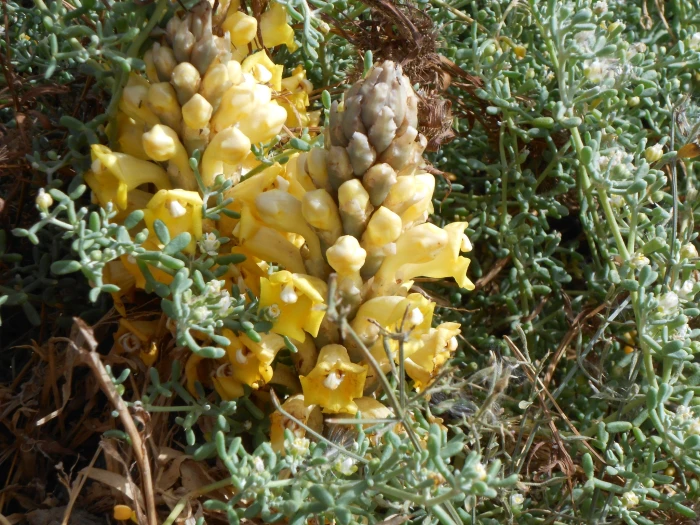Desert Hyacinth
(Cistanche tubulosa)
Desert Hyacinth (Cistanche tubulosa)
/
/

© Lies Van Rompaey
CC BY 4.0
Image By:
© Lies Van Rompaey
Recorded By:
Copyright:
CC BY 4.0
Copyright Notice:
Photo by: © Lies Van Rompaey | License Type: CC BY 4.0 | License URL: http://creativecommons.org/licenses/by/4.0/ | Uploader: liesvanrompaey | Publisher: iNaturalist |

























Estimated Native Range
Climate Requirements for Jackson, Tennessee
| This Plant | Your Site | Plant Suitability for Your Location | ||
|---|---|---|---|---|
| • Precipitation | 0" - 74" | 54" | Aquatic | Aquatic |
| • High Temp. | 80°F - 116°F | 90°F | Your summer temperatures are normal for this plant. | Excellent |
| • Low Temp. | 7°F - 73°F | 28°F | Your winter temperatures are normal for this plant | Excellent |
This plant may not grow well at your location - your precipitation is too high.
Summary
Cistanche tubulosa, commonly referred to as Desert Hyacinth, is a holoparasitic perennial herb that lacks chlorophyll and is native to arid regions in Northern Africa and the Middle East, especially the Arabian Peninsula. It parasitizes the roots of host plants, particularly those in the Tamaricaceae family, to obtain water and nutrients. This plant typically grows to a height of 10-40 cm. It features a fleshy, erect stem with scales instead of leaves and produces tubular, yellow to reddish flowers that are clustered in a spike-like inflorescence, blooming from April to June. The flowers are not particularly showy but are interesting due to their unique parasitic nature.
Desert Hyacinth is not commonly cultivated but is valued for its medicinal properties in traditional Chinese medicine, where it is known as ròucongróng. It is harvested in the spring before the plant sprouts. In cultivation, it would require a host plant and sandy, well-drained soils in an environment that mimics its desert habitat. It is not suitable for general garden use due to its parasitic lifestyle and specialized growing requirements. However, it may be of interest to botanical gardens or for research purposes.CC BY-SA 4.0
Desert Hyacinth is not commonly cultivated but is valued for its medicinal properties in traditional Chinese medicine, where it is known as ròucongróng. It is harvested in the spring before the plant sprouts. In cultivation, it would require a host plant and sandy, well-drained soils in an environment that mimics its desert habitat. It is not suitable for general garden use due to its parasitic lifestyle and specialized growing requirements. However, it may be of interest to botanical gardens or for research purposes.CC BY-SA 4.0
Plant Description
- Plant Type:
- Height: 1-3 feet
- Width: 0.5-1 feet
- Growth Rate: Moderate
- Flower Color: Yellow
- Flowering Season: Spring, Summer
- Leaf Retention: Semi-deciduous
Growth Requirements
- Sun: Full Sun
- Water: Low
- Drainage: Fast
Common Uses
Drought Tolerant, Low Maintenance
Natural Habitat
Native to arid regions such as the Taklamakan Desert and parasitizes the roots of host plants, particularly those in the Tamaricaceae family
Other Names
Common Names: Giant Broomrape , Desert Hyacinth
Scientific Names: Cistanche tubulosa , Phelipaea flava , Phelipaea gigantea , Phelipaea tubulosa , Phelypaea tubulosa
GBIF Accepted Name: Cistanche tubulosa